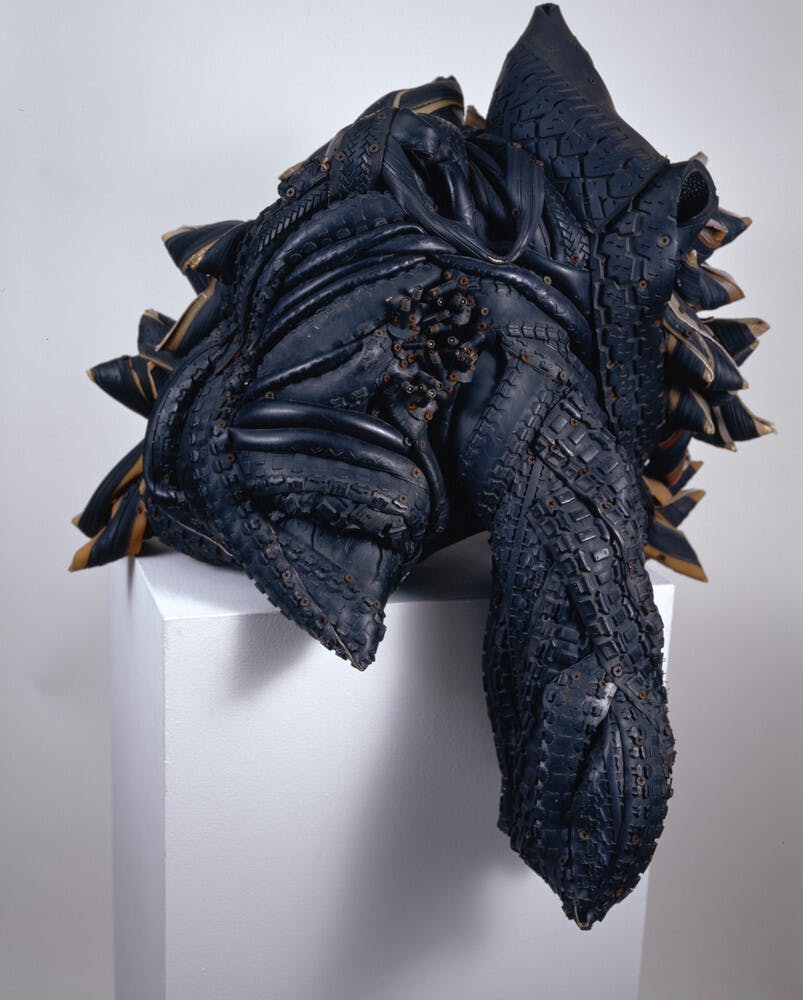Repugnant Rapunzel (Let Down Your Hair), 1995

- Artist
Chakaia Booker
- Title
Repugnant Rapunzel (Let Down Your Hair)
- Date
1995
- Medium
Rubber tires, metal
- Dimensions
33 × 25 × 22 in. (83.8 × 63.5 × 55.9 cm) 59 × 24 × 24 in. (149.9 × 61 × 61 cm) (including pedestal)
- Credit line
The Studio Museum in Harlem; gift of Friends and Family of Chakaia Booker
- Object Number
1996.7
Repugnant Rapunzel (Let Down Your Hair), with its gnarled tire knot leading to a thick rubber braid, puts a dark spin on the classic fairy tale by suggesting that there is hardship interspersed with beauty. For sculptor Chakaia Booker, repurposed rubber tires carry a range of cultural, historical, and visual associations, including textiles, Black hair culture in the United States, physical aging, consumerism, and capitalism. While alluding to the rubber industry’s reliance on exploited African labor, this work also encourages viewers to reflect on their position within a system that renders people and resources expendable.
Repugnant Rapunzel (Let Down Your Hair), 1995

- Artist
Chakaia Booker
- Title
Repugnant Rapunzel (Let Down Your Hair)
- Date
1995
- Medium
Rubber tires, metal
- Dimensions
33 × 25 × 22 in. (83.8 × 63.5 × 55.9 cm) 59 × 24 × 24 in. (149.9 × 61 × 61 cm) (including pedestal)
- Credit line
The Studio Museum in Harlem; gift of Friends and Family of Chakaia Booker
- Object Number
1996.7
Repugnant Rapunzel (Let Down Your Hair), with its gnarled tire knot leading to a thick rubber braid, puts a dark spin on the classic fairy tale by suggesting that there is hardship interspersed with beauty. For sculptor Chakaia Booker, repurposed rubber tires carry a range of cultural, historical, and visual associations, including textiles, Black hair culture in the United States, physical aging, consumerism, and capitalism. While alluding to the rubber industry’s reliance on exploited African labor, this work also encourages viewers to reflect on their position within a system that renders people and resources expendable.